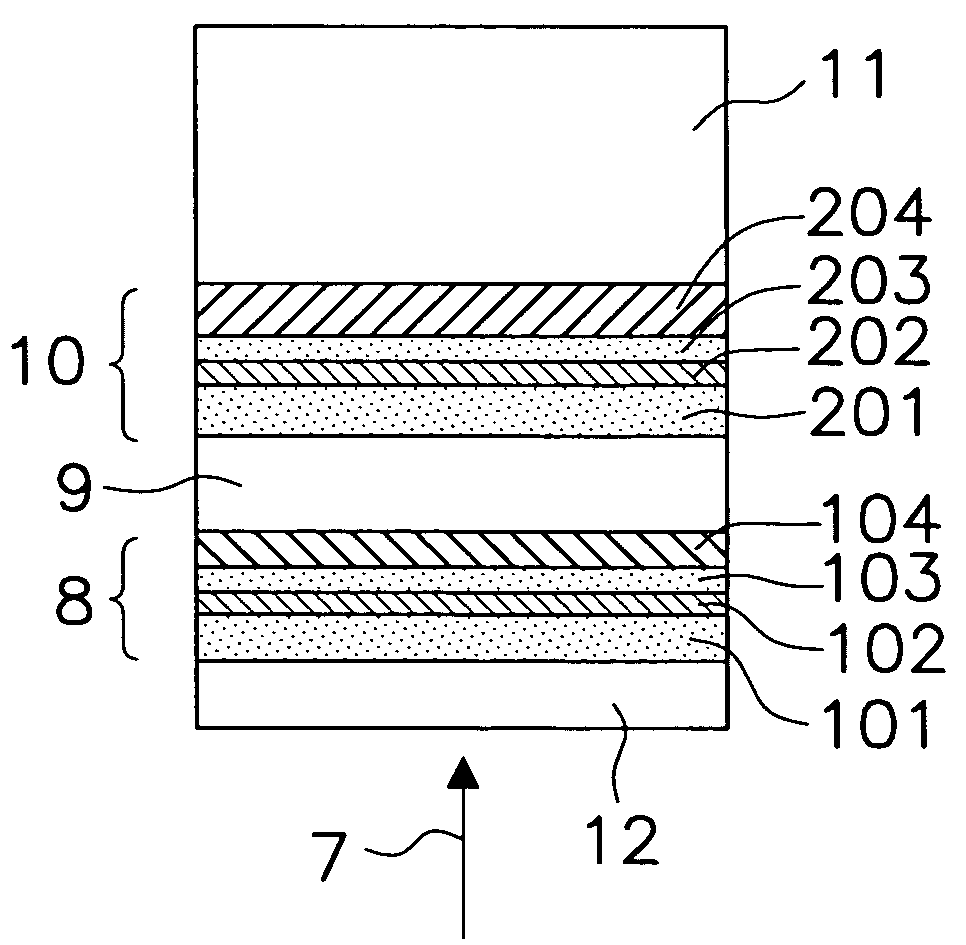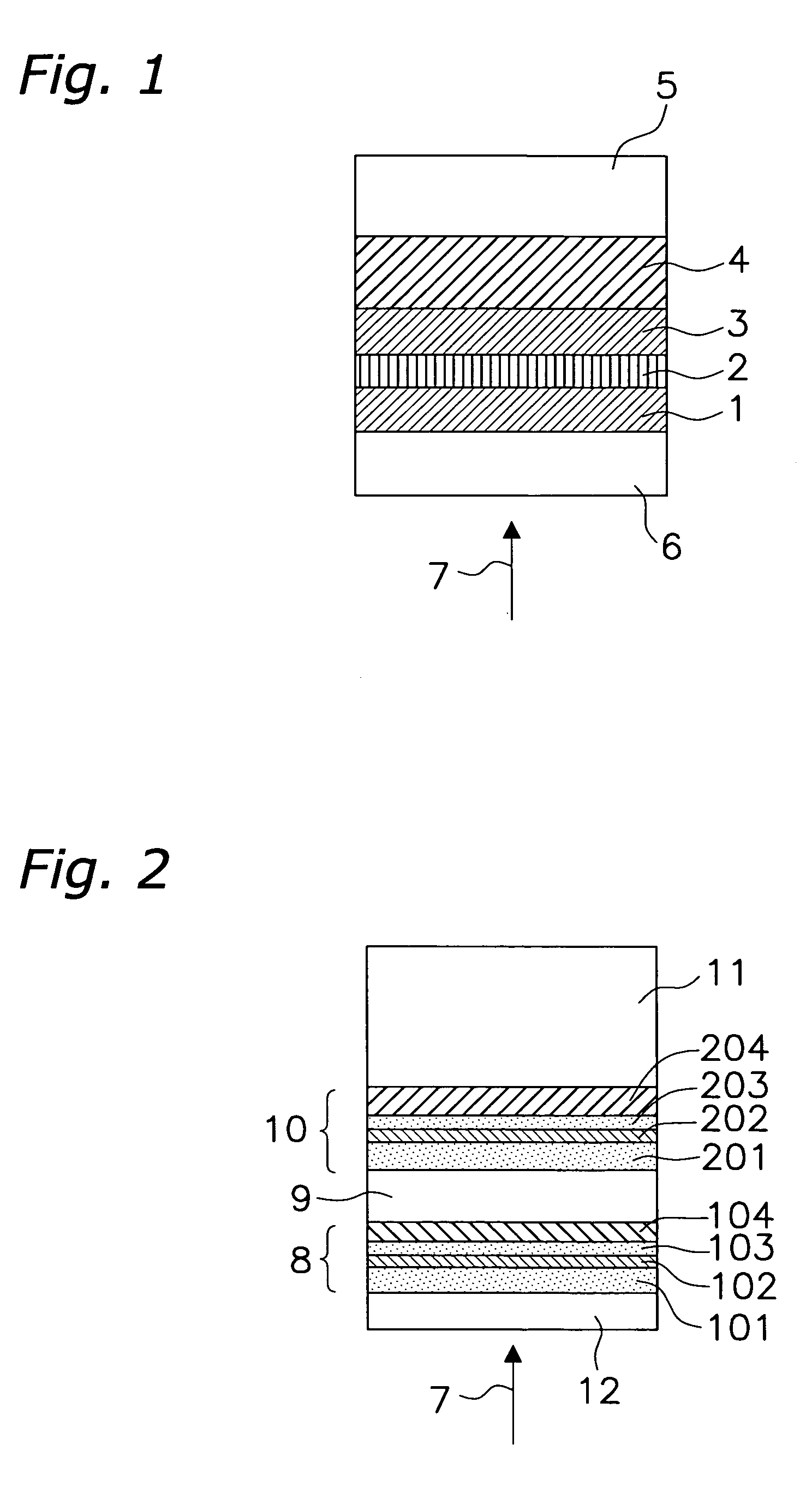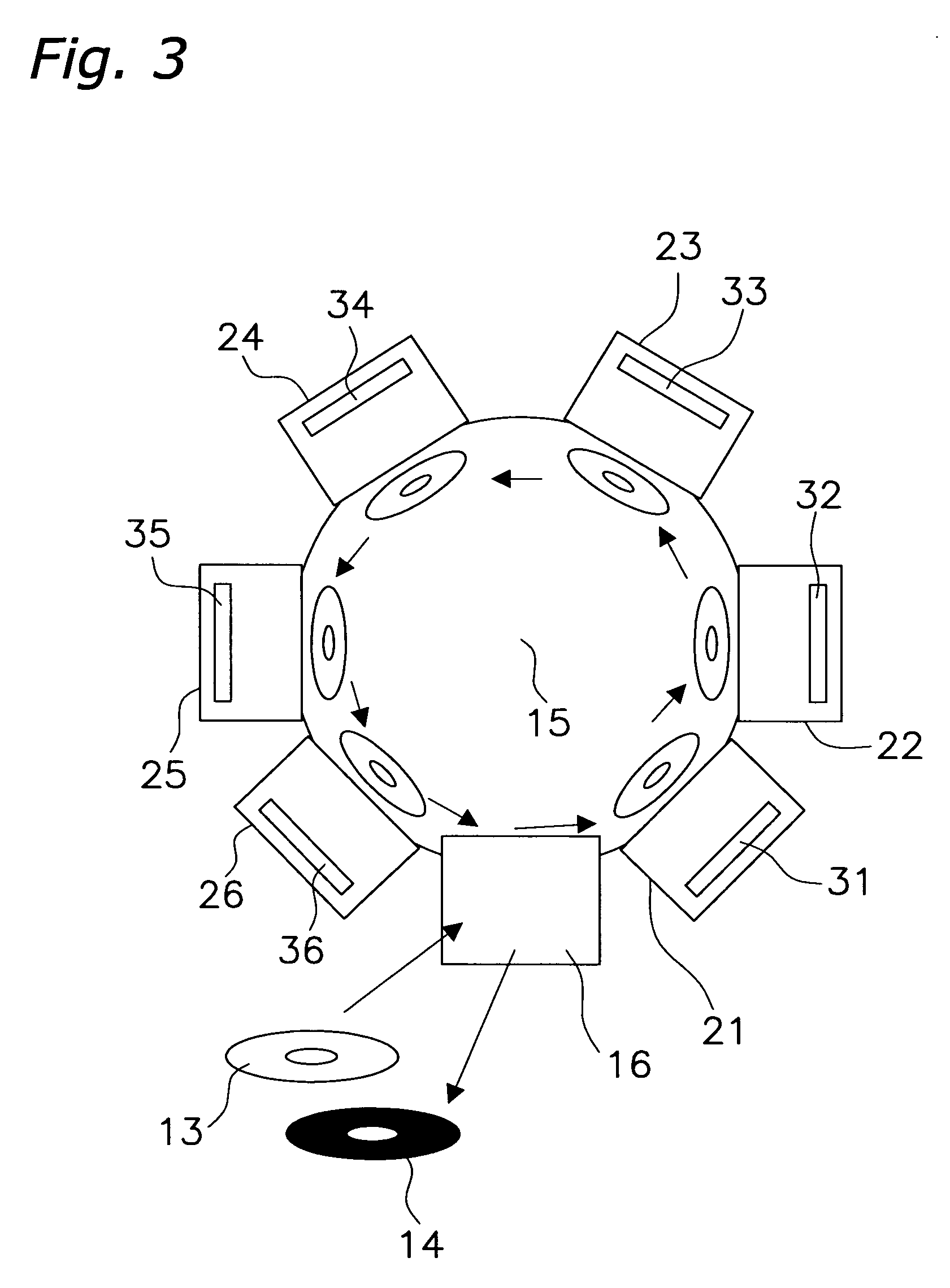Information recording medium, method of manufacturing the same, and sputtering target
- Summary
- Abstract
- Description
- Claims
- Application Information
AI Technical Summary
Benefits of technology
Problems solved by technology
Method used
Image
Examples
example 1
[0058] Hereafter, example 1 of the present invention will be described in detail. Here, by using the manufacturing equipment shown in FIG. 3, a thin-filmed test piece was produced to analyze the oxygen composition ratio. As the structure of the test piece, ten recording layers of Te—O—Pd having 30 nm thick were stacked on a Si substrate. The manufacturing method of the test piece is explained below. First, in the manufacturing equipment shown in FIG. 3, sputtering targets 34 and 35 that are 20 cm in diameter and composed of (TeO2)87Te5Pd8 (mol %) were placed in film formation chambers 24 and 25. The substrate used for the test piece was Si of size 12 mm×18 mm and 1 mm thick. This Si substrate was fixed to a film formation jig, and was placed in a load lock chamber 16. The film formation started at the film formation chamber 24, after passing through the film formation chambers 21, 22, 23. When forming a recording layer, Ar gas at 12 sccm and oxygen gas at 1.0 sccm was provided at a ...
example 2
[0065] (1) Example of the Present Invention
[0066] Hereinafter, example 2 of the present invention will be described in detail. Here, by using the manufacturing equipment shown in FIG. 3, an information recording medium including the layer structure shown in FIG. 1 is described. As an example, a plate of 1.1 mm thickness as the substrate 5, a disk-shaped polycarbonate resin of 120 mm diameter, a compound introducing 20 mol % SiO2 into ZnS as the protection layer 1 and 3, a material of which the main component is Te—O—Pd as the recording layer 2, and a metal compound of Al98Cr2 as the reflection layer 4 were used. As the light transparent layer 6, a disk-shaped polycarbonate resin of 0.1 mm thickness was adhered thereto with UV resin. The protection layers 1 and 3 had a film thickness of 10 nm and 17 nm respectively, the recording layer 2 was 30 nm, the reflection layer 4 was 40 nm.
[0067] In the equipment shown in FIG. 3, the reflection layer 4 is formed in the film-forming chamber ...
example 3
[0076] Hereafter, example 3 of the present invention is described in detail. In example 3, by using one of the mass-produced media in example 2, a reflectance ratio, C / N value and a jitter value were evaluated at an inner, an intermediate and an outer radial position on the disk surface, and their distribution over the entire disk was investigated.
[0077] Here, evaluation conditions for the C / N value and the jitter value are described. The same recording / reproducing equipment described in example 2 was employed. The optical systems included a laser wavelength of 405 nm, numerical aperture of the objective lens of 0.85 and a linear velocity of the medium of 9.84 m / s (a double-speed). As the modulation method of the signal, 1-7 PP modulation was used. Density corresponded to a capacity of 25 GB. To evaluate C / N, a single signal of 2 T (its mark length was 0.149 μm) was recorded on a groove using the optimum laser power for each medium. A spectrum analyzer was employed for the measurem...
PUM
| Property | Measurement | Unit |
|---|---|---|
| Speed | aaaaa | aaaaa |
| Composition | aaaaa | aaaaa |
| Flow rate | aaaaa | aaaaa |
Abstract
Description
Claims
Application Information
 Login to View More
Login to View More - R&D
- Intellectual Property
- Life Sciences
- Materials
- Tech Scout
- Unparalleled Data Quality
- Higher Quality Content
- 60% Fewer Hallucinations
Browse by: Latest US Patents, China's latest patents, Technical Efficacy Thesaurus, Application Domain, Technology Topic, Popular Technical Reports.
© 2025 PatSnap. All rights reserved.Legal|Privacy policy|Modern Slavery Act Transparency Statement|Sitemap|About US| Contact US: help@patsnap.com



